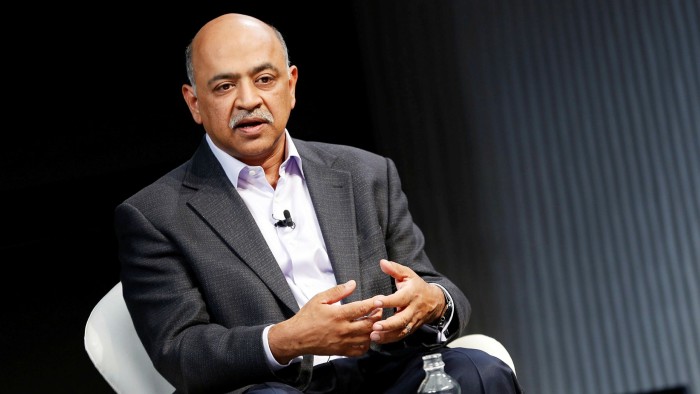How to make sure the remote workforce is a winning team

Roula Khalaf, Editor of the FT, selects her favourite stories in this weekly newsletter.
An online MBA can boost your salary, your connections, and your career prospects — but what will you actually learn? In an occasional series, we share the insights of teachers at top-ranked business schools.
While remote working has been on the rise for many years, it took the pandemic to bring us to a tipping point. Since then, office workers who actually work full-time in an office have become the exception rather than the rule. Most of those who experienced the greater autonomy that goes with remote work or hybrid work (part-office, part-remote) are in no hurry to relinquish it.
The resulting “asynchronised workforce” — with some or all staff working remotely — poses a formidable challenge for leaders. They must work out how to instil and maintain their organisation’s culture, how to enable employees to achieve work-life balance, and how to recreate the serendipitous collisions of ideas that occur in physical settings.
Preserving a culture is tricky enough in a physical environment, still more so in remote and hybrid settings. Culture reflects both what organisations aim to achieve through their core values, and how they intend to achieve it — what processes they favour. In physical workplaces, people acquire this cultural knowledge simply by seeing how things get done; in remote and hybrid settings, the onus falls on leaders to explain, exemplify and amplify.
FT Online MBA ranking 2022 — 10 of the best

Find out which schools are in our ranking of Online MBA degrees. Take a look at our analysis and methodology. Also, read the rest of our coverage at www.ft.com/online-learning.
The first of these tasks, explaining the culture, needs to be done succinctly and comprehensibly. A crisp, clear statement of core values helps — such as the one used by clothing company Patagonia, which sets out to “build the best product, cause no unnecessary harm, use business to protect nature and not [be] bound by convention”.
Second, when staff are working remotely, it becomes imperative to use the power of example to show what the organisation stands for, by recognising and rewarding those who exemplify the culture. Companies are increasingly turning to software platforms for this: food company Chobani uses Bonusly, for example, while software developer X-Team uses Slack.
Finally, amplifying the culture means emphasising it to staff whenever there’s an opportunity. One effective technique is for leaders to spell out why their actions are consistent with what the organisation stands for. For example, Arvind Krishna, head of technology company IBM, posted a work-from-home pledge on LinkedIn during the early days of the pandemic. He stressed the importance of sensitivity to families and personal needs, and, crucially, made clear that his own and, more important, his employees’ wellbeing was paramount.
Beyond attending to the culture, asynchronous organisations also need to focus on working practices.
When the pandemic arrived, many organisations went into overdrive, fearful of being derailed by the impact. For their staff, that resulted in a merging of work and life that was untenable in the long run, with stress, isolation and “Zoom fatigue” all taking a toll.
Companies are therefore trying to design jobs in ways that are sensitive to employees’ mental health. Many are trying out four-day working weeks (such as Microsoft Japan, Panasonic and Atom Bank) or meeting-free times and days (Atlassian’s “Get $#!t Done Day” and Citi’s “Zoom Free Fridays”).
Harry’s Inc., the personal care company, gives employees “golden time” that they can mark in their calendars: periods when they can disconnect from work without having to say why. Employees can also carve out “head down time”, when they can work without distractions from notifications, emails and calls.

Other businesses are building in time for activities that employees are passionate about — even if they fall outside their core responsibilities. Manufacturing conglomerate 3M, for example, allows staff to spend 15 per cent of their work time on projects they are eager to explore.
Part of unlearning pandemic-driven habits is questioning the need for meetings. When is the effort they require — of synchronising people who are largely working asynchronously — really worthwhile?
The antidote to Zoom fatigue may be to allow work to be done by individuals working separately, and to resort to meetings only to resolve conflicts. Doist — which builds productivity apps — says 95 per cent of its team communication is asynchronous.
Synchronous meetings can be a very effective tool, but only if used in moderation. Too often, they are used merely to share information about what people are working on, when a more valuable purpose would be team-building and socialising.
Such informal encounters could also help spark new ideas. One critical reason for working in offices was to hear others’ perspectives and be motivated to think creatively. Replicating these moments is a challenge in asynchronous settings. By its nature, serendipity doesn’t lend itself to management.
Even so, it is possible to design the virtual workplace so it includes “spaces” for ideas that are equivalent to the whiteboards and Post-it notes of the physical one. Companies such as furniture manufacturer Steelcase are using the digital platform Mural to enable collaboration and the sharing of ideas across global teams.
The pandemic may be subsiding in many countries but the new ways of working that it catalysed are here to stay. Organisations that can adjust to that reality will be well placed to prosper when the next crisis hits.
Arvind Malhotra is the H. Allen Andrew distinguished professor of strategy and entrepreneurship at Kenan-Flagler Business School, University of North Carolina at Chapel Hill
Comments